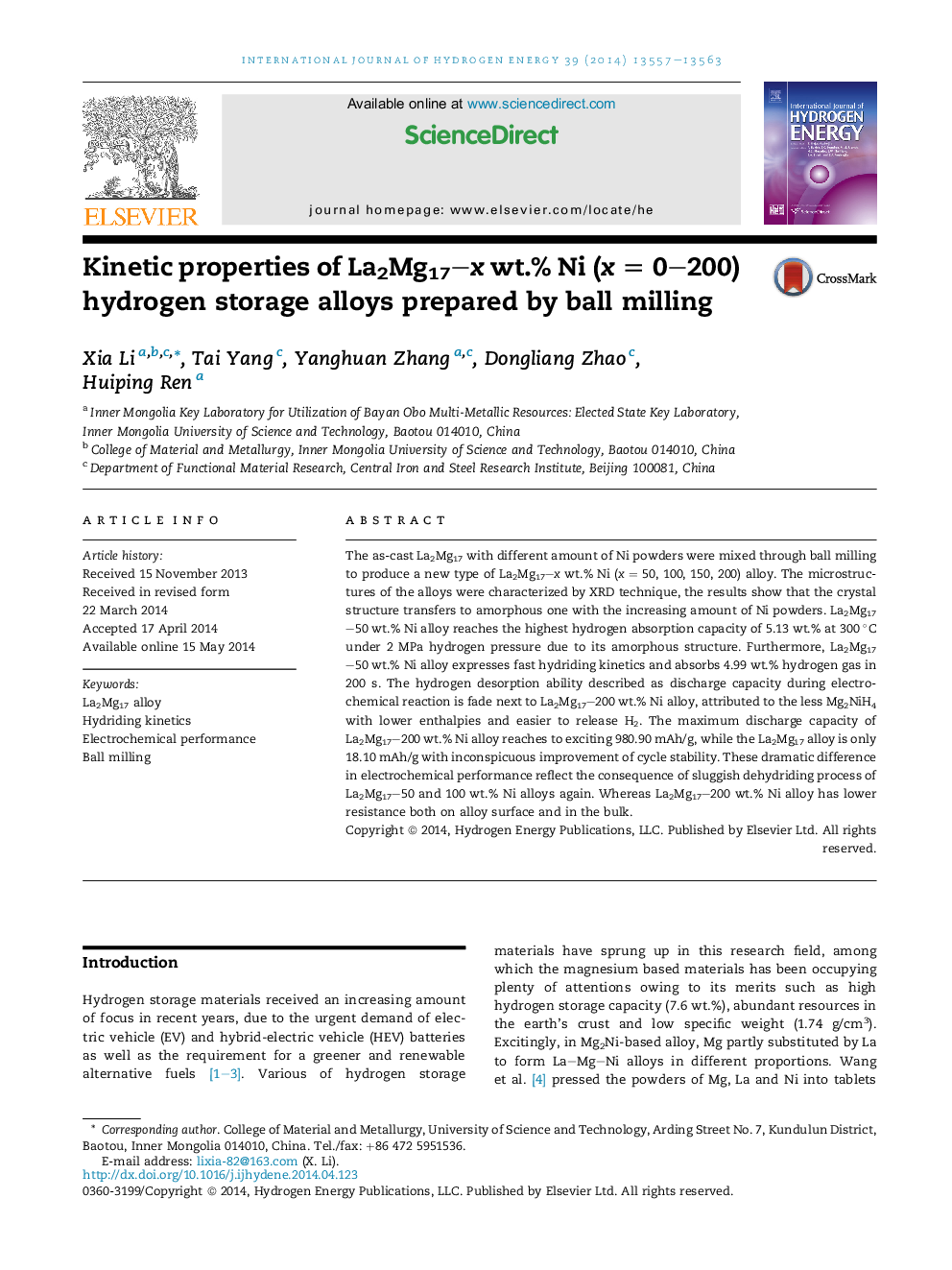| Article ID | Journal | Published Year | Pages | File Type |
|---|---|---|---|---|
| 1272654 | International Journal of Hydrogen Energy | 2014 | 7 Pages |
•Addition of Ni on La2Mg17 and ball milling process form an amorphous.•Unstable hydrides were obtained via the addition of Ni.•The maximum hydrogen capacity of La2Mg17–50 wt.% Ni reached to 5.13 wt.% at 300 °C.•Electrochemical discharge capacity increase 54 times under addition of 200 wt.%Ni.
The as-cast La2Mg17 with different amount of Ni powders were mixed through ball milling to produce a new type of La2Mg17–x wt.% Ni (x = 50, 100, 150, 200) alloy. The microstructures of the alloys were characterized by XRD technique, the results show that the crystal structure transfers to amorphous one with the increasing amount of Ni powders. La2Mg17–50 wt.% Ni alloy reaches the highest hydrogen absorption capacity of 5.13 wt.% at 300 °C under 2 MPa hydrogen pressure due to its amorphous structure. Furthermore, La2Mg17–50 wt.% Ni alloy expresses fast hydriding kinetics and absorbs 4.99 wt.% hydrogen gas in 200 s. The hydrogen desorption ability described as discharge capacity during electrochemical reaction is fade next to La2Mg17–200 wt.% Ni alloy, attributed to the less Mg2NiH4 with lower enthalpies and easier to release H2. The maximum discharge capacity of La2Mg17–200 wt.% Ni alloy reaches to exciting 980.90 mAh/g, while the La2Mg17 alloy is only 18.10 mAh/g with inconspicuous improvement of cycle stability. These dramatic difference in electrochemical performance reflect the consequence of sluggish dehydriding process of La2Mg17–50 and 100 wt.% Ni alloys again. Whereas La2Mg17–200 wt.% Ni alloy has lower resistance both on alloy surface and in the bulk.
